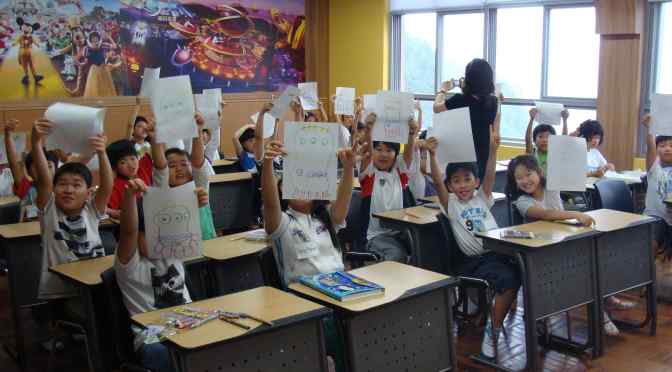 I recently met a fellow who was looking into finding work as an English teacher. He had volunteered a few times before but he still only had a general idea of how to structure an ESL class. He asked me what I normally do and so I gave him a very basic break down of an ESL class. I learned this structure in South Korea and have used it ever since.
I recently met a fellow who was looking into finding work as an English teacher. He had volunteered a few times before but he still only had a general idea of how to structure an ESL class. He asked me what I normally do and so I gave him a very basic break down of an ESL class. I learned this structure in South Korea and have used it ever since.
An ESL class typically consists of 4 or 5 parts:
Introduction/Greeting – 3 minutes
Very basic part. The best idea is to establish some sort of routine that you go through. Good morning/afternoon/evening and allow the students to give the appropriate response. You can call on a few of the students and ask them how they are, what they did, where they went, etc. I always liked to engage my students in conversation at the beginning of the class. The strong students usually responded first, but it helps to get the nerves out of the weaker students by asking them a few simple questions. Don’t drill them, but show them that it’s okay to speak up and make mistakes. This will help their confidence. The introduction gives them a chance at a rehearsed section and some free conversation. This works for both younger and older students, though with older students I’m more inclined to ask them about how their day went, friends, work, etc. and generally make more conversation than with younger students.
Development – 15 minutes x 2
Usually split into two parts, each part dealing with one or two of the four basic skills: listening, speaking, reading, writing. Most schools will have a textbook that you can go by so your job may be little more than explain the exercise and then walk around correcting answers. The typical structure of BOTH development parts is:
- introduce the material
- given an example
- get one of the students to try
- ask them if they understand
- instruct the students what they are to do
- give them five minutes to work on the exercise
- then spend 5 minutes asking students for their answers. Select both stronger and weaker students, though it pays to let some stronger students go first.
Game – 20 minutes
All students love games if only because it means they can squirrel away to the back and avoid eye contact with you. You’ll know better, of course. The game section often has the following pattern:
- introduction of the game
- example
- explanation of the rules
- play
Splitting the class into two teams is fun because it fosters competition, though make sure you lay down the rules for misbehaviour. The last thing you want is students yelling out answers, hitting each other (it happens), or getting overly excited that chaos rains supreme.
Review – 2 minutes
Another easy part of the class and only 2 minutes until you can sit down and breathe a sigh of relief… until your next class begins in five minutes. Ask one of the stronger students what they learned today, then select a weaker student to give an answer.
Extra – ?? minutes
There are times when you will finish your class early. As an ESL teacher you’re expected to keep those kids working on their English skills until that bell rings. If you have extra time, it pays to have a few quick games to play. Word games, chain game, hangman (kids LOVE this game), or anything that gets the kids talking and using their English will work.
TOTAL = 55 minutes
These times are, of course, flexible.
Can you survive for 55 minutes? Yes, of course you can. Really, it’ll go by faster than you can possibly imagine.
